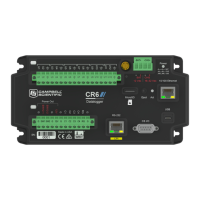l Set the data logger to be a PakBus router only as needed. When the data logger is a router,
and it connects to another router like LoggerNet, it exchanges routing information with
that router and, possibly (depending on your settings), with other routers in the network.
Network Planner set this appropriately when it is used. This is also set through the IsRouter
setting in the Settings Editor. For more information, see the Device Configuration Settings
Editor Information tables and settings (advanced) (p. 163).
l Set PakBus beacons and verify intervals properly. For example, there is no need to verify
routes every five minutes if communications are expected only every 6 hours. Network
Plannerwill set this appropriately when it is used. This is also set through the Beacon and
Verify settings in the Settings Editor. For more information, see the Device Configuration
Settings Editor Beacon() and Verify() settings.
For information on Designing a PakBus network using the Network Planner tool in LoggerNet,
watch the following video:
7.1 General serial communications
The data logger supports two-way serial communications. These communications ports can be
used with smart sensors that deliver measurement data through serial data protocols, or with
devices such as modems, that communicate using serial data protocols. See Communications
ports (p. 12) for information on port configuration options.
CRBasic instructions for general serial communications include:
l
SerialOpen()
l
SerialClose()
l
SerialIn()
l
SerialInRecord()
l
SerialInBlock()
l
SerialOut()
l
SerialOutBlock()
See the CRBasic Editor help for detailed instruction information and program examples:
https://help.campbellsci.com/crbasic/cr6/.
7. Communications protocols 91

